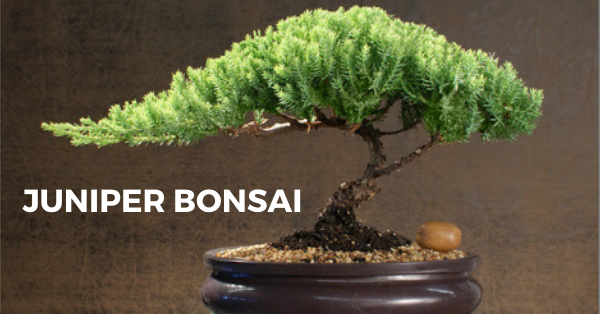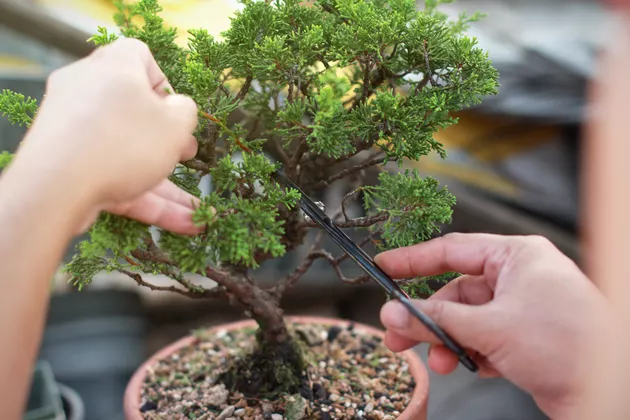Juniper Bonsai Tree Care: The Ultimate Guide [2022]
Understanding Juniper bonsai tree care is essential as Junipers are one of the most popular choices for bonsai trees.
They’re tough, long-lived, and have a very natural appearance. But they need to be cared for properly in order to thrive. This post will serve as your juniper bonsai care guide with tips on how to keep these little guys happy and healthy!
Juniper bonsai tree general care
Junipers like lots of light but not direct sun during hot summer months (though it can handle some).
It prefers cooler temperatures between 45 – 65 degrees Fahrenheit which is why it’s best indoors or outdoors when temps get too low.
The soil should be well draining and airy to allow for good drainage – there’s a reason junipers are often used in rock gardens! You might want to consider using a cactus/succulent potting mix.
Juniper also requires little water, so don’t over water it!
Water when the soil has dried out almost completely and then only in small amounts. Junipers love humidity so you might consider putting them on a tray of wet pebbles until the soil is moist again – this creates humidity to help the foliage stay green and healthy.
You can even place your juniper near your shower or a humidifier when winter temperatures are too low for it to thrive.
Junipers are susceptible to a lot of pests – scale insects, aphids, and spider mites being the most common.
Treating your juniper with insecticidal soap is effective on these but watch out for burning the foliage!
Another issue you might encounter with junipers (as well as many other trees) is root rot caused by too much water and/or poor drainage.
Your juniper will suffer if the roots are damaged so avoid overwatering!
Styling your Juniper bonsai tree
Junipers respond well to pruning, at least as a young plant before it gets too big and gnarly.
Older growth can be removed completely or you can leave some for texture and interest. The new growth that junipers put out is incredibly sharp, so be careful when doing any work on your tree!
They can also benefit from wiring to shape them as you please and many will do well in a bonsai pot, though they’re adaptable to many different styles of containers.
Finally, because juniper foliage is so tough, it’s also a good tree for beginners.
How and when to water your juniper bonsai tree
Junipers are very light watering, so a watering can or hose with a watering wand might be your best bet. If watering from the top, avoid watering in mid-day sun as it could cause heat stress on the tree.
Use lukewarm water and pour it over the soil.
Pests and your Juniper bonsai tree
Junipers are susceptible to a number of pests including scale insects, aphids, and spider mites. You should check your tree regularly for any problems and be sure not to over watering which can lead to root rot!
If you find yourself having problems with scale (which look like small brown dots), try using insecticidal soap as a treatment. Spray the juniper bonsai tree leaves with insecticide soap.
When watering, be sure not to get the soap in the watering can or on your hands as it will kill beneficial insects as well!
Aphids (small green bugs) can also cause a lot of damage, but you might just find that your juniper is resistant to them.
Spider mites are a bit harder but is often manageable with systemic insecticides and watering carefully from the bottom of the pot by hand, so as not use an overhead sprayer that can spread pests throughout your house or office.
Pruning your Juniper bonsai tree
Junipers respond well to pruning but you want to be careful not to overdo it as junipers don’t like being cut back too much. For styling, remove older growth that is brown or dead-looking and new growth will soon replace it.
What pruning tools should you use?
When cutting juniper bonsai, it will be very sharp. So to protect your hands, you can wear gloves.
Pruning scissors which have a sharp straight point are the best scissors to cut juniper bonsai tree. You can also use weeders, carving saws and hand pruners.
Junipers grow well in Bonsai pots
Junipers will do fine growing in either shallow or deeper pots but you should consider watering from below if they’re in deep pots.
Best soil for Juniper bonsai trees
You can use a regular potting soil but you should add some extra grit , sand or perlite for the juniper bonsai tree to have good drainage.
If your soil is too compact and does not drain well, watering will be difficult to do properly. If there is water standing in the pot for more than an hour after watering you should drill some holes in the bottom of the pot with a concave bit.
Containers for Juniper bonsai pots

You can use decorative pots for your juniper bonsai. Some people make slanted pots. The goal is to have a pot with good drainage and watering holes in the bottom.
A regular shallow nursery pot works well if you don’t want to repot your juniper every year. A deeper wider pot will hold more soil but it will be harder to water watering from the bottom.
Junipers are often grown in ceramic pots with square sides (called in Japanese style). Sometimes you will see shallow or deeper bonsai pots used for juniper bonsai trees.
Many styles of glazing can be used on these types of containers.
Colours of Juniper bonsai trees
Green Junipers are good for Bonsai trees
I think it might be helpful to those who are just starting off in bonsai.
Many people think that juniper bonsai can only be created into certain styles such as formal upright or slanting. But there are many varieties of junipers available and we can also use them in different styles.
Styles of Juniper bonsai trees
For example, here is a black pine which I bought from Ikea for my bonsai collection. The goal is to create something unique just by using one juniper tree and some creativity.
A black pine juniper in slanting style
If you are working with a small area such as a balcony or limited outdoor space, then it is best to choose the right bonsai tree for your situation.
So if you are just starting out in Bonsai and trying to come up with a design that suits your available area, choosing juniper bonsai would be great idea. They can even be used as small garden features in pots on steps or in planters on decks.
Conclusion
unipers are some of the most popular bonsai trees, and with good reason.
They’re easy to care for and can be grown in a variety of different shapes depending on your preference or desired style.
To keep them looking their best, you’ll need to follow these six steps:
1) Provide regular watering;
2) Feed sparingly while they’re small then increase as they mature;
3) Prune when needed (usually about once per year);
4) Keep juniper bonsais out of direct sunlight;
5) Use moss instead of soil for better root health;
6) Repot every two years if necessary so roots don’t become too cramped. Now that you have all this information at your disposal it is time for you to go out and select your very own juniper bonsai tree.
Be sure to pick one that’s perfect for your home, as it will be a great investment in the future!


